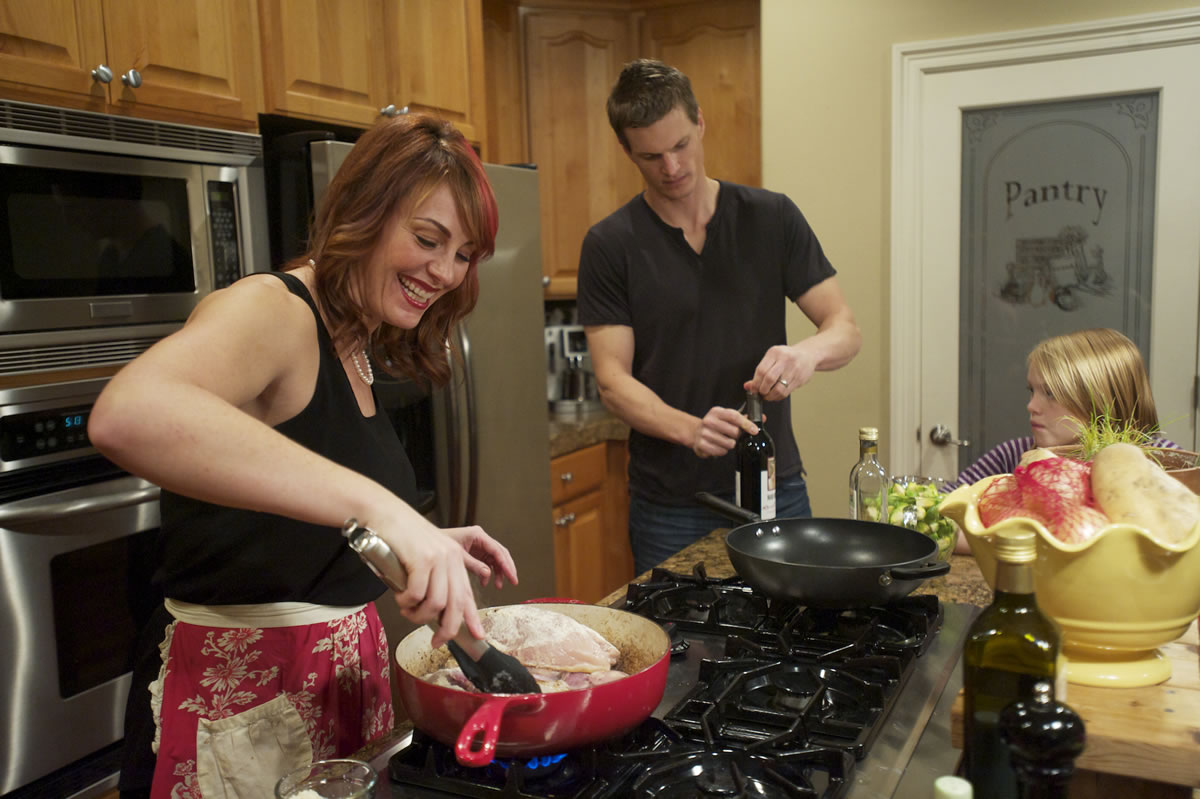What began as a 30-day challenge has evolved into a new way of life for one Felida family.
Last October, Mary and Aaron Helmes decided to eliminate dairy, grain, refined sugar and processed food from their diet for 30 days. They joined other members of their gym, Industrial Crossfit, in adopting the paleo diet — a diet built around meat, seafood and fresh fruits and vegetables.
o The paleo diet mimics the diet of our ancestors prior to the agricultural revolution. The diet, also referred to as the caveman diet, centers on the consumption of meats, seafood, eggs, nuts and seeds, and fresh fruits and vegetables.
o People following the paleo diet cut dairy, grain, legumes, refined sugar and processed foods out of their diets.
o The paleo diet mimics the diet of our ancestors prior to the agricultural revolution. The diet, also referred to as the caveman diet, centers on the consumption of meats, seafood, eggs, nuts and seeds, and fresh fruits and vegetables.
o People following the paleo diet cut dairy, grain, legumes, refined sugar and processed foods out of their diets.
After enduring the initial withdrawals — days of craving bread, cereal and microbrews — the Helmeses realized how great they felt.
“I like that it’s real food,” Mary said. “I like the way it makes you feel.”
In the 13 months the family has followed the paleo diet, Mary and Aaron have noticed even more benefits.
They haven’t been sick, even with the common cold, in more than a year. Their seasonal allergy symptoms have improved drastically. And they have more energy.
“To me, that’s significant,” Mary said.
Aaron and Mary’s three kids have also adopted the diet, though to a lesser extent.
Mary and Aaron’s diets are about 80-20 — 80 percent paleo, 20 percent non-paleo. Their three kids 13-year-old Trinity, 9-year-old Bella and 8-year-old Jude — eat paleo meals for breakfast and dinner. They get to pack their own lunches, though, and are free to make sandwiches, drink milk and eat crackers. The kids’ diets are closer to 60-40, Mary said.
Trinity often chooses to pack a paleo lunch, making a salad loaded with fruits and veggies, eating leftover meat for protein and nibbling on almonds for snacks.
“That stuff looks good to me now,” Trinity said.
That’s not to say Trinity and the rest of the family don’t indulge. Every so often, the family will opt for sushi or a takeout pizza for dinner. The problem, they said, is everyone feels sluggish and bloated afterward.
“You get a food hangover the next day,” Aaron said.
The general consensus among dietitians is paleo is a healthy diet, said Chris Collins, a registered dietitian at PeaceHealth Southwest Medical Center. The diet isn’t the right fit for everyone, however, because everyone has different preferences, she said.
Those who are following the paleo diet should pay special attention to the foods they’re eating to ensure they’re meeting dietary needs such as calcium, Collins said.
The Helmeses’ diet change pushed Mary to come up with new paleo-friendly recipes for her family. She started substituting ingredients in some recipes — coconut flour instead of wheat flour, squash in place of spaghetti noodles — and started from scratch on others.
She shared some of her creations on her Facebook page, but her friends were craving more. So Mary started another Facebook page, Paleo in a Pinch, and began posting recipes every week.
From there, the opportunities started rolling in.
Mary started contributing to The Columbian’s Live Well site, blogging regularly on her Paleo in a Pinch blog. She created another blog, with the same name, on Tumblr for another recipe-sharing platform. And just a few weeks ago, Farrar’s Bistro & Bar in Felida began featuring Paleo in a Pinch dishes.
“The doors keep opening, and I keep walking through them,” Mary said.
Mary hopes sharing her recipes will encourage others to really think about the food they’re putting into their bodies, perhaps even adopt a paleo diet.
But, as with any lifestyle change, adopting a paleo lifestyle first requires a real desire and commitment to make the change, Mary said.
People are often intimidated by the idea of adopting a whole new diet, especially one that relies heavily on fruits and vegetables.
“They don’t know what they’re going to cook,” Aaron said.
Creating weekly menus and prepping food in advance makes that easier. And learning about the food and researching ways to prepare it are also helpful, they said.
But the best way to get going, Aaron said, is to try your own 30-day challenge.
“Give it 30 days,” he said. “Give it a month, and see how you feel.”
Marissa Harshman: 360-735-4546; http://twitter.com/col_health; http://facebook.com/reporterharshman; marissa.harshman@columbian.com.




